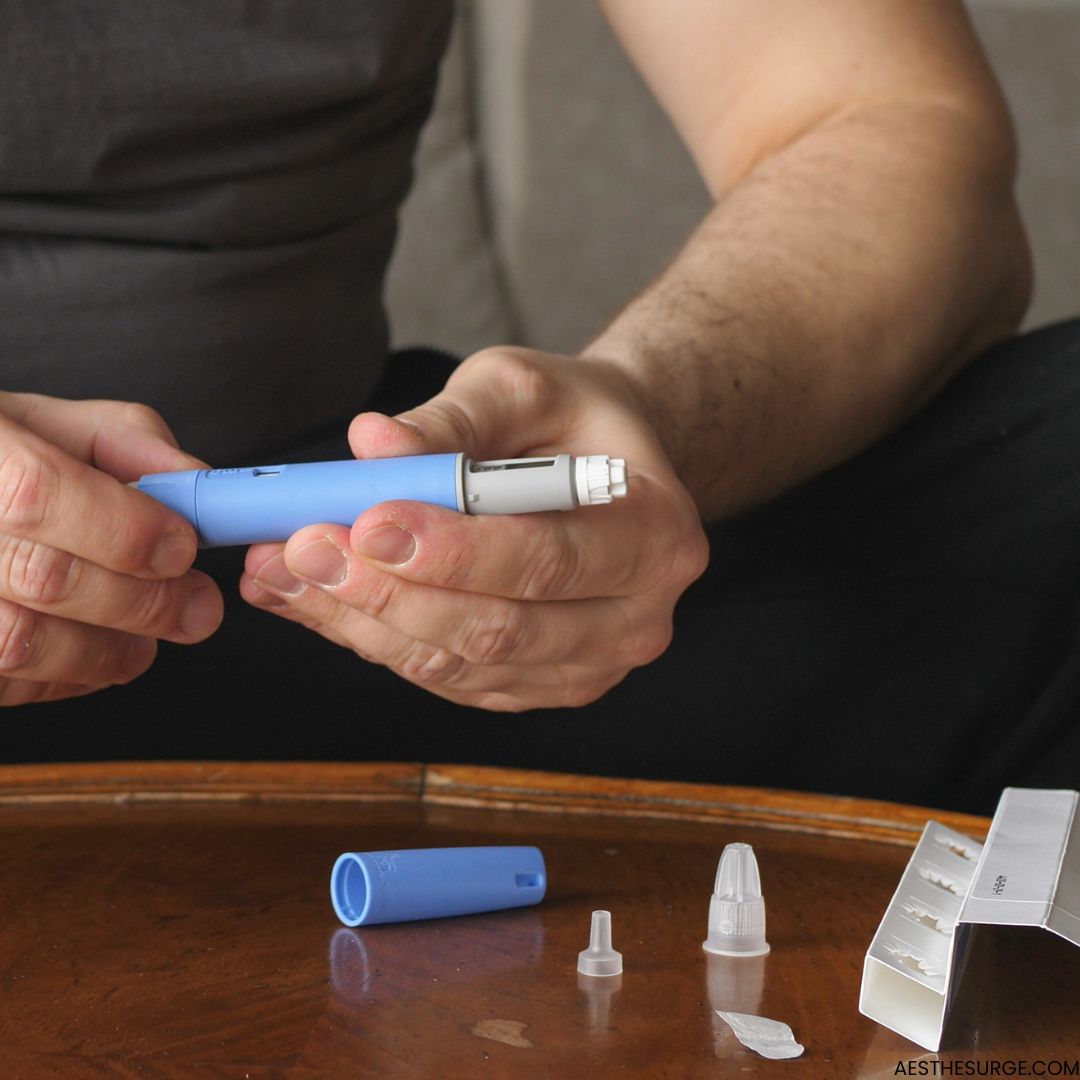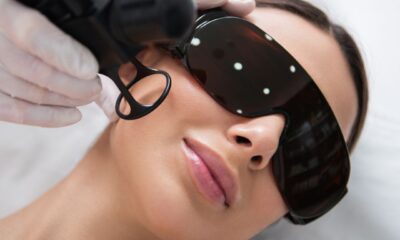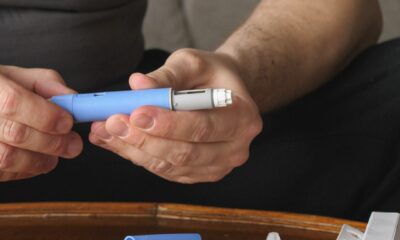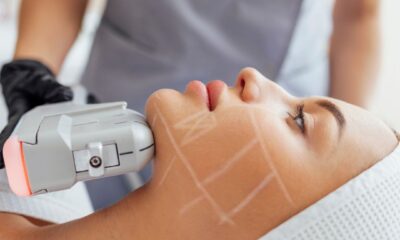Blog
Women: How To Control Weight Gain During The Pregnancy

Are you expecting and worried about weight gain during pregnancy? Don’t fret! Maintaining a healthy weight during this transformative time is possible with a balanced approach. In this article, we will explore effective causes of excessive weight gain during pregnancy for women.
Pregnancy is a beautiful and miraculous journey that brings about tremendous changes in a woman’s body. However, it is common for expectant mothers to experience weight gain as their bodies nurture and support the growing life within. While weight gain is natural and necessary for a healthy pregnancy, it’s important to find a balance that promotes the well-being of both the mother and the baby.
By adopting a holistic approach that combines proper nutrition, regular exercise, and mindfulness, expectant mothers can manage and control weight gain during pregnancy. We will delve into the significance of a healthy diet, incorporating safe exercises, and the power of self-care practices.
Causes of Excessive Weight Gain During Pregnancy
During pregnancy, most women typically gain between 25 and 35 pounds (11.5 to 16 kilograms). In the first trimester, a gain of 2 to 4 pounds (1 to 2 kilograms) is common, followed by an average of 1 pound (0.5 kilogram) weekly for the remainder of the pregnancy. If you’re overweight before pregnancy, a gain of 10 to 25 pounds (4 to 11 kilograms) is often recommended. Underweight women may need to aim for a weight gain of 28 to 40 pounds (13 to 18 kilograms). For pregnancies involving multiple babies, such as twins, an increase of 37 to 54 pounds (16.5 to 24.5 kilograms) is typically suggested.
A nutritious diet complemented by regular exercise paves the way for a wholesome pregnancy. Here’s a general calorie guideline for pregnant women:
- 1st trimester: 1,800 calories daily
- 2nd trimester: 2,200 calories daily
- 3rd trimester: 2,400 calories daily
What’s Causing the Weight Gain?
Wondering where the weight goes during pregnancy? Not all of it is fat. Here’s a breakdown of the approximate distribution of a 35-pound (16-kilogram) weight gain:
- Baby: 8 pounds (3.5 kilograms)
- Placenta: 2 to 3 pounds (1 to 1.5 kilograms)
- Amniotic fluid: 2 to 3 pounds (1 to 1.5 kilograms)
- Breast tissue growth: 2 to 3 pounds (1 to 1.5 kilograms)
- Increased blood supply: 4 pounds (2 kilograms)
- Fat reserves: 5 to 9 pounds (2.5 to 4 kilograms)
- Expansion of the uterus: 2 to 5 pounds (1 to 2.5 kilograms)
Pregnancy and Weight Management: How to Manage Weight Gain During Pregnancy for Women
The amount of weight you gain throughout pregnancy has an impact on both the short- and long-term health of both you and your unborn child. Learn about the recommended weight gain during pregnancy and the actions you can take to achieve your weight gain objective.
How much weight should a pregnant woman gain?
Your body mass index (BMI) prior to pregnancy determines how much weight you should gain throughout pregnancy. Body mass index (BMI) is a gauge of body fat derived from height and weight. Women don’t care your healthy properly and many causes of excessive weight gain during pregnancy help to gain the weight mostly.
During pregnancy, healthy weight gain is recommended by the Institute of Medicine. Discuss your weight gain objectives with your healthcare physician if you are expecting triplets or more.With the exception of underweight mothers of twins, all recommendations come from the Institute of Medicine. Luke B, Hediger ML, Nugent C, Newman RB, Mauldin JG, Witter FR, et al. are the sources. Weight gain specific to body mass index and ideal birth weights in twin pregnancies.
What Percentage of Women Gained Weight During Pregnancy?
Only roughly a third (32%) of pregnant women acquired the necessary amount of weight, and the majority of them (21% too little, 48% too much), according to a prior study.
Why Is It Important to Gain Weight During Pregnancy in the Appropriate Amount?
Pregnant women who do not gain the correct amount of weight run the risk of having too small babies. Some babies that are born too small may have trouble latching on to their mothers, may be more susceptible to illness, and may have developmental delays (not reaching the milestones for their age).
Overeating when pregnant is linked to having a baby who is born overly large, which can cause problems during birth, necessitate a cesarean section, and result in juvenile obesity. Gaining more weight than is advised can also cause you to retain extra weight after delivery, which can result in obesity.
What Can You Do to Prevent Weight Gain During Pregnancy?
Recognize your calorie needs. Generally speaking, extra calories are not needed during the first trimester (or first three months). Women typically require an extra 340 calories per day during the second trimester, which lasts for three months, and an additional 450 calories per day during the third trimester, which lasts for three months.
Establish and revisit your weight gain objectives with your healthcare physician before, throughout, and after your pregnancy.
Throughout your pregnancy, keep a close eye on your weight gain and compare it to the suggested ranges for a safe pregnancy.
Managing weight gain during pregnancy is important for both the mother’s and the baby’s health. However, remember that gaining some weight is both normal and essential for the health of the baby. The key is to ensure this weight gain is within a healthy range and achieved through nutritious choices. Always consult your healthcare provider before making changes to your diet or exercise routine, especially during pregnancy.
Here are some general guidelines to manage weight gain during pregnancy naturally:
- Understand Healthy Weight Gain: Before aiming to manage weight, it’s vital to understand what’s considered a healthy weight gain during pregnancy. This typically varies based on your pre-pregnancy weight:
- Underweight: 28-40 pounds
- Normal weight: 25-35 pounds
- Overweight: 15-25 pounds
- Obese: 11-20 pounds
However, these numbers can vary based on individual health, multiple pregnancies (like twins), and other factors.
- Eat a Balanced Diet:
- Focus on whole foods like vegetables, fruits, lean proteins, whole grains, and dairy.
- Eat regular, smaller meals throughout the day to manage hunger and maintain stable blood sugar.
- Limit processed, sugary, and fried foods.
- Stay hydrated. Sometimes, the body can confuse thirst with hunger. Drinking water can help you feel full and is essential for hydration.
- Exercise Regularly:
- With your doctor’s approval, aim for at least 150 minutes of moderate-intensity aerobic activity every week.
- Prenatal yoga, walking, swimming, and low-impact aerobics are generally safe for most pregnant women.
- Strengthening exercises, especially for the core and pelvic floor, can be beneficial.
- Monitor Your Weight:
- Regularly track your weight gain but avoid obsessing over it.
- Remember that weight gain during pregnancy is not linear. There may be times when you gain more and times when you gain less.
- Limit Excess Salt and Sugar:
- Too much salt can lead to water retention.
- Excess sugar can contribute to excessive weight gain and other health issues.
- Manage Cravings:
- It’s okay to indulge occasionally, but try to opt for healthier alternatives when possible.
- If you crave sweets, try fruits or yogurt instead of candy or baked goods.
- Stay Active:
- Incorporate regular physical activity into your routine. Even simple activities like walking can make a difference.
- Get Adequate Sleep:
- Sleep is essential for overall health and can help regulate hormones related to hunger and appetite.
- Limit Stress:
- Chronic stress can lead to overeating or unhealthy eating habits. Find ways to manage stress, such as meditation, deep breathing exercises, or prenatal yoga.
- Educate Yourself:
- Consider joining a prenatal class or group that focuses on nutrition and exercise.
- Seeing a nutritionist who specializes in prenatal care can also be beneficial.
- Avoid Alcohol and Limit Caffeine:
- Alcohol has empty calories and is not recommended during pregnancy.
- Too much caffeine can lead to dehydration and is also linked with preterm birth and low birth weight. It’s generally advised to limit caffeine intake to less than 200 mg per day during pregnancy.
- Listen to Your Body:
- Every woman’s body is different. Listen to its signals and respond accordingly. If you’re hungry, eat. If you’re tired, rest.
Lastly, remember that pregnancy is a unique time in your life. While it’s essential to be health-conscious, it’s also crucial to enjoy the experience and not be overly harsh on yourself. Always work closely with your healthcare provider to ensure that any steps you take are safe and beneficial for both you and your baby.
Is it possible to lose weight quickly during pregnancy?
It’s not always a smart idea to lose weight while pregnant, even though it is doable with regular activity and lower meals. Although those with higher BMIs should acquire less weight, most pregnant women need to gain weight. Although wonderful, becoming pregnant might cause weight problems if you are already overweight.
Join Us
Join us as we provide practical tips and expert guidance to help you maintain a healthy weight and promote overall well-being during this special time. Don’t let concerns about weight gain overshadow the joy of pregnancy embrace a balanced approach and enjoy this incredible journey!
Blog
Mounjaro Price in Pakistan

Introduction: Why Mounjaro is the Talk of the Town in Pakistan
In recent years, weight management and diabetes treatment have seen revolutionary advancements worldwide. One name that has gained massive attention both internationally and now in Pakistan is Mounjaro (Tirzepatide). Originally approved by the FDA for the treatment of type 2 diabetes, Mounjaro quickly became popular for its unparalleled weight loss results. Patients who previously struggled with obesity or poor metabolic control are now turning to Mounjaro as a life-changing solution.
But with this growing demand comes a very common question: What is the Mounjaro injection price in Pakistan, and where can you get it safely?
This detailed guide will cover everything you need to know about Mounjaro’s cost, benefits, availability, side effects, and comparison with other weight loss injections like Saxenda, Ozempic, and Wegovy. By the end, you’ll also learn why it is strongly recommended to get Mounjaro treatment at Aesthedoc Clinic Islamabad and Aesthesurge Clinic Rawalpindi — two of the leading names in medical aesthetics and weight loss management in Pakistan.
Mounjaro Price in Pakistan
The price of Mounjaro in Pakistan varies depending on the dosage strength, availability, and whether you are purchasing it directly from a pharmacy or receiving it under the supervision of a certified clinic.
- On average, the Mounjaro injection price in Pakistan ranges from PKR 90,000 to PKR 150,000 per pen depending on the milligram dosage and supply chain.
- Some online pharmacies claim to offer cheaper options, but patients are strongly advised to avoid unverified sellers, as counterfeit or expired products are a serious risk in Pakistan’s market.
- At Aesthedoc Clinic Islamabad and Aesthesurge Clinic Rawalpindi, Mounjaro treatment is provided under professional guidance, ensuring safe storage, correct dosage, and medically supervised administration.
💡 Pro tip for patients: Always remember that while the price matters, your safety and results depend on choosing a clinic that specializes in weight loss injections.
How Does Mounjaro Work?
Mounjaro contains Tirzepatide, a first-of-its-kind medication that works as a dual GIP and GLP-1 receptor agonist. Unlike traditional diabetes or weight loss medications that target just one pathway, Mounjaro works on two powerful mechanisms:
- Regulating blood sugar – improving insulin sensitivity and lowering glucose levels.
- Suppressing appetite & slowing digestion – making you feel full for longer, reducing calorie intake naturally.
This unique mechanism makes Mounjaro far more effective for weight reduction compared to alternatives like Saxenda or Ozempic.
Benefits of Mounjaro for Weight Loss & Diabetes
Mounjaro has been hailed as a game-changer because of its wide range of benefits:
- Rapid weight loss results – many patients lose up to 15–20% of their body weight over several months.
- Better diabetes management – improved blood sugar control for type 2 diabetic patients.
- Reduced appetite & cravings – making diet control easier.
- Long-term sustainability – patients often find weight loss easier to maintain.
- Boosted energy & confidence – thanks to a healthier metabolism.
For patients in Pakistan, this means a real solution to weight issues that were once only manageable through surgery or extreme dieting.
Mounjaro vs Saxenda vs Ozempic vs Wegovy
When searching for weight loss injections in Pakistan, you will come across multiple options. Here’s how Mounjaro compares:
| Injection | Active Ingredient | Avg. Price in Pakistan | Effectiveness for Weight Loss | Availability |
|---|---|---|---|---|
| Mounjaro | Tirzepatide | PKR 45,000 – 70,000 | ★★★★★ (Up to 20% body weight reduction) | Limited, available at top clinics |
| Saxenda | Liraglutide | PKR 25,000 – 35,000 | ★★★ (8–10% body weight reduction) | Widely available in pharmacies |
| Ozempic | Semaglutide | PKR 35,000 – 50,000 | ★★★★ (12–15% body weight reduction) | Available but often in shortage |
| Wegovy | Semaglutide (higher dose) | PKR 45,000 – 65,000 | ★★★★★ (Similar to Mounjaro, but higher cost) | Not widely available in Pakistan yet |
👉 As seen above, Mounjaro leads the race in terms of both effectiveness and popularity. While Saxenda and Ozempic remain strong alternatives, Mounjaro’s unique dual-action mechanism offers unmatched weight loss results.
Possible Side Effects of Mounjaro
Like any medication, Mounjaro may cause side effects, especially in the beginning. Common but usually mild symptoms include:
- Nausea
- Vomiting
- Diarrhea
- Decreased appetite
- Fatigue
Most of these symptoms improve as the body adjusts to the medication. However, this is exactly why professional supervision at a clinic is important. Self-injecting without medical guidance can increase risks.
Why You Should Choose a Clinic Instead of Self-Use
While some patients try to buy Mounjaro online or from unverified pharmacies, the risks are high:
- Fake or expired injections
- Incorrect dosage leading to complications
- No medical monitoring for side effects
- Poor storage (insulin-based injections require strict refrigeration)
At Aesthedoc Clinic Islamabad and Aesthesurge Clinic Rawalpindi, patients benefit from:
✅ Certified doctors & aesthetic physicians
✅ Proper dosage guidance
✅ Safe injection administration
✅ Regular progress monitoring
✅ Customized weight loss programs
FAQs on Mounjaro Price & Usage in Pakistan
1. What is the current Mounjaro price in Pakistan?
The average cost ranges between PKR 45,000 – 70,000 per pen, depending on the dosage.
2. Is Mounjaro better than Saxenda or Ozempic?
Yes, studies show Mounjaro offers more significant weight loss results than both Saxenda and Ozempic.
3. Can I buy Mounjaro without a prescription in Pakistan?
It is strongly advised to use Mounjaro under medical supervision only, as it requires proper dosage and monitoring.
4. How long before I see results?
Most patients notice weight loss within 4–6 weeks, with significant results over 3–6 months.
5. Where can I get Mounjaro injections in Islamabad and Rawalpindi?
You can safely receive treatment at Aesthedoc Clinic Islamabad or Aesthesurge Clinic Rawalpindi, where certified experts administer the injections.
Final Thoughts: Transform Your Weight Loss Journey with Mounjaro
Mounjaro is not just another weight loss trend — it is a scientifically proven, FDA-approved solution that has changed the lives of thousands worldwide. In Pakistan, it is now available for patients who are serious about taking control of their weight and health.
While the Mounjaro price in Pakistan may seem high compared to alternatives, the results, safety, and life-changing impact make it worth every rupee.
💡 If you’re ready to begin your journey, book your consultation today at:
👉 Aesthedoc Clinic Islamabad
👉 Aesthesurge Clinic Rawalpindi
Take the first step toward a healthier, more confident you.
Blog
Face Lift Treatment Options

As individuals age, visible signs such as wrinkles, sagging skin, and facial volume loss begin to appear. A face lift is a proven aesthetic procedure designed to address these concerns, restoring a youthful, refreshed appearance. Whether you’re noticing fine lines around the mouth or deeper folds near the cheeks and jawline, modern face lift options offer both non-surgical and surgical solutions tailored to your unique needs.
What Is a Face Lift?
A face lift, also known as rhytidectomy, is a cosmetic treatment aimed at reducing visible signs of aging in the face and neck. This procedure targets sagging skin, deep creases, jowls, and loose skin on the neck, providing a tighter and more contoured look.
Types of Face Lift Treatments Available
1. Non-Surgical Face Lift Treatments
Non-invasive techniques are becoming increasingly popular for individuals looking for minimal downtime and subtle yet noticeable results.
- HIFU (High-Intensity Focused Ultrasound)
This non-invasive treatment uses ultrasound energy to stimulate collagen production and tighten skin naturally, often referred to as a “lunchtime lift.” - Thread Lift
A procedure involving dissolvable threads placed under the skin to lift and tighten sagging areas. It stimulates collagen while providing immediate elevation. - Dermal Fillers & Botox
While not traditional lifts, these injectables help restore facial volume, smooth wrinkles, and improve contour—ideal for early signs of aging. - Radiofrequency (RF) Skin Tightening
RF energy penetrates the skin to boost collagen and elastin, tightening loose skin with no cuts or needles involved.
2. Surgical Face Lift Options
Surgical procedures offer more dramatic and long-lasting results, suitable for moderate to advanced signs of aging.
- Traditional Full Face Lift
This comprehensive approach targets deep wrinkles, sagging cheeks, jowls, and excess neck skin. It involves repositioning facial tissues and removing excess skin for a refined appearance. - Mini Face Lift
A less invasive version, the mini face lift targets early signs of aging, particularly around the jawline and lower cheeks, with smaller incisions and quicker recovery. - Mid-Face Lift
Specifically designed to lift the area around the cheeks and under the eyes, restoring a fuller and youthful facial contour. - Neck Lift (Lower Rhytidectomy)
Often performed alongside a face lift, this focuses on removing sagging skin and fat deposits in the neck region.
Benefits of Face Lift Treatments
- Reduces sagging and wrinkles
- Enhances jawline definition
- Restores youthful facial volume
- Boosts confidence and self-image
- Long-lasting, natural-looking results
Who Is the Ideal Candidate?
Face lift procedures are ideal for individuals experiencing:
- Sagging facial skin
- Deep nasolabial folds
- Jowls or a double chin
- Loss of skin elasticity
- A desire for long-term rejuvenation
Both men and women between the ages of 35 and 65 commonly consider these treatments based on their skin condition and aesthetic goals.
Recovery and Aftercare
Recovery times vary depending on the procedure. Non-surgical options require little to no downtime, while surgical face lifts may take 2–3 weeks for full recovery. Proper skincare, hydration, and sun protection are essential for maintaining results.
Where to Get Face Lift Treatments in Islamabad & Rawalpindi?
If you’re considering a face lift to restore your youthful appearance, two highly regarded options in the region are:
- Aesthedoc Clinic Islamabad – Offering advanced non-invasive and surgical face lifting techniques with a focus on precision and patient satisfaction.
- Aesthesurge Clinic Rawalpindi – Known for its comprehensive cosmetic services, this clinic provides safe and effective face lift procedures using the latest technologies.
Rediscover your confidence with personalized face lift treatments today. Book your consultation at Aesthedoc Clinic in Islamabad or Aesthesurge Clinic in Rawalpindi and start your journey toward a younger, revitalized you.
Blog
Hymen Repair Surgery Treatment Results in Pakistan

Hymen repair surgery, also known as hymenoplasty, is a minor surgical procedure that reconstructs the hymen—a thin membrane located at the vaginal opening. In Pakistan, this procedure is increasingly sought for personal, cultural, and social reasons. Whether you’re preparing for marriage or seeking restoration after trauma, this article provides a complete guide to the procedure, recovery, results, and more.
What Is Hymen Repair Surgery?
The hymen can tear due to various non-sexual or sexual reasons, such as sports, injury, or intercourse. Hymenoplasty involves carefully stitching the torn edges of the hymen to recreate a membrane that mimics the natural structure.
The procedure:
- Is performed under local or general anesthesia
- Takes approximately 1 to 2 hours
- Is conducted as an outpatient procedure, allowing same-day discharge
At Aesthedoc, highly trained aesthetic physicians and plastic surgeons in Pakistan use advanced techniques to ensure results that are both discreet and natural-looking.
Why Women Choose Hymen Repair in Pakistan
In many Pakistani communities, the hymen symbolizes virginity, leading some women to opt for hymenoplasty to align with societal or cultural expectations. Other reasons include:
- Avoiding pre-marital stigma
- Healing from sexual trauma or abuse
- Correcting congenital absence of hymenal tissue
Each woman’s decision is deeply personal. Clinics such as Aesthedoc prioritize confidentiality and emotional well-being, ensuring compassionate, private care.
How the Hymenoplasty Procedure Works
- Initial Consultation: The specialist reviews your health history, expectations, and goals.
- Surgical Process: The torn edges of the hymen are stitched. If the tissue is absent, a small artificial membrane may be created.
- Post-Procedure Care: Patients return home the same day. Dissolvable stitches typically fade within 2–3 weeks.
Post-Surgery Recovery and Aftercare
Proper aftercare is essential for healing and natural results:
- Avoid physical exertion or intense exercise for 2–4 weeks
- Maintain hygiene and follow aftercare instructions
- Abstain from intercourse for 6–8 weeks
Most women return to regular activities within 7 days, with full recovery by 6–8 weeks.
Results of Hymen Repair Surgery in Pakistan
Pakistan-based clinics like Aesthedoc report high levels of patient satisfaction. Expected outcomes include:
- Natural appearance and texture
- Minimal or no visible scarring
- High success rate with long-term results (until next rupture)
Note: The hymen does not regenerate after it breaks again.
How to Choose a Trusted Hymen Repair Surgery Clinic in Pakistan
Selecting a clinic with the right expertise ensures your safety, comfort, and desired outcome. Look for:
- Certified Aesthetic Physicians & Plastic Surgeons
- Strong privacy policies
- Sterile, modern surgical facilities
- Transparent pricing and consultation support
Clinics like Aesthedoc are committed to providing discreet, professional, and respectful care.
FAQs About Hymen Repair Surgery in Pakistan
Q1: Is hymenoplasty painful?
A1: The procedure is mostly painless due to local anesthesia. Some soreness may occur for a few days post-surgery.
Q2: Can the surgery be detected?
A2: No. The reconstructed hymen looks and feels natural. Even doctors cannot tell unless informed.
Q3: What is the cost of hymen repair in Pakistan?
A3: Prices range from PKR 50,000 to PKR 150,000, depending on the case and clinic.
Q4: Are there any side effects?
A4: Side effects are rare but may include mild swelling, discomfort, or infection—all manageable with standard care.
Q5: When can I get married after surgery?
A5: It’s best to wait 6–8 weeks post-surgery for full healing before marriage or sexual activity.
Confidential Hymenoplasty Services at Aesthedoc
At Aesthedoc, our team of qualified aesthetic physicians and plastic surgeons provides safe, private, and non-judgmental hymen repair services. We offer:
- Personalized consultations
- Modern surgical care
- Affordable, transparent packages
- Patient-centered support in a confidential environment
Final Thoughts
Hymenoplasty in Pakistan is a safe, effective, and confidential solution for women seeking restoration for cultural, emotional, or medical reasons. With experienced professionals at Aesthedoc, patients receive respectful care with the utmost privacy.
If you’re considering hymen repair surgery, book a confidential consultation today. Aesthedoc is here to support your journey—discreetly and professionally.
-

 Blog11 months ago
Blog11 months agoFace Lift in Islamabad
-

 Blog8 months ago
Blog8 months agoLaser Skin Tightening in Rawalpindi Islamabad Lahore
-

 Blog3 months ago
Blog3 months agoMounjaro Price in Pakistan
-

 Blog8 months ago
Blog8 months agoPRP Stem Cell Exosomes in Pakistan AestheSurge
-

 Blog8 months ago
Blog8 months agoHymen Repair Surgery Treatment Results in Pakistan
-
Blog2 years ago
Weight Loss Injections, Saxenda Injection Treatment Price in Pakistan
-

 Blog8 months ago
Blog8 months agoMicroneedling Treatment Cost in Pakistan AestheSurge
-

 Blog8 months ago
Blog8 months agoHIFU Treatment Cost in Pakistan
